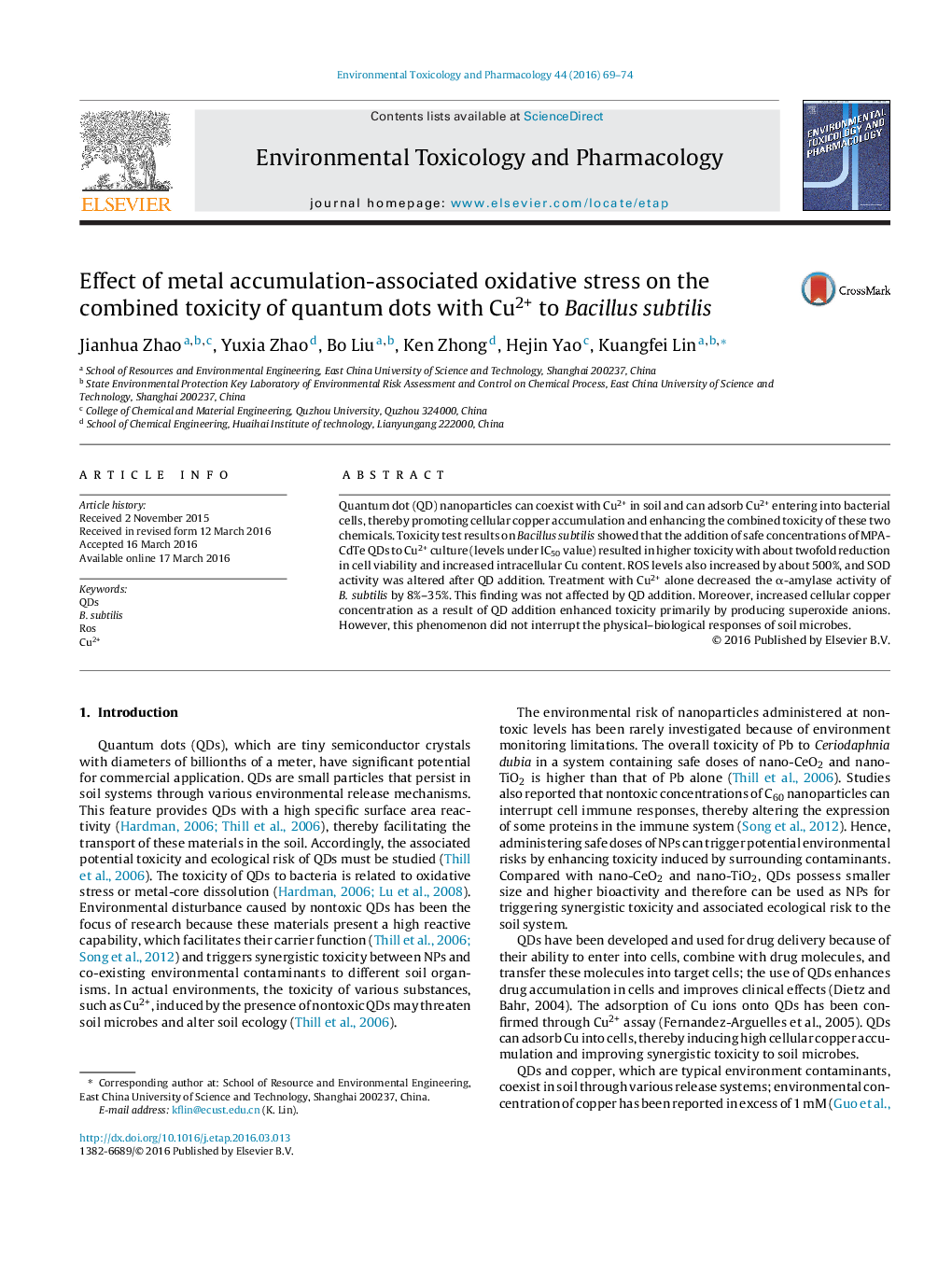| Article ID | Journal | Published Year | Pages | File Type |
|---|---|---|---|---|
| 2582789 | Environmental Toxicology and Pharmacology | 2016 | 6 Pages |
•Quantum dot (QD) nanoparticles can coexist with Cu2+ in soil.•QD and Cu2+ can promote cellular copper accumulation and enhance toxicity.•The addition of MPA-CdTe QDs to Cu2+ culture resulted in higher toxicity.•ROS levels increased greatly, and SOD activity was altered after QD addition.•Treatment with Cu2+ alone decreased theα-amylase activity of B. subtilis.
Quantum dot (QD) nanoparticles can coexist with Cu2+ in soil and can adsorb Cu2+ entering into bacterial cells, thereby promoting cellular copper accumulation and enhancing the combined toxicity of these two chemicals. Toxicity test results on Bacillus subtilis showed that the addition of safe concentrations of MPA-CdTe QDs to Cu2+ culture (levels under IC50 value) resulted in higher toxicity with about twofold reduction in cell viability and increased intracellular Cu content. ROS levels also increased by about 500%, and SOD activity was altered after QD addition. Treatment with Cu2+ alone decreased the α-amylase activity of B. subtilis by 8%–35%. This finding was not affected by QD addition. Moreover, increased cellular copper concentration as a result of QD addition enhanced toxicity primarily by producing superoxide anions. However, this phenomenon did not interrupt the physical–biological responses of soil microbes.
